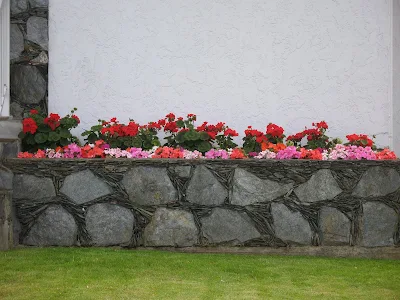
Simon Scott is an actor friend of Norman who lives in Creiff. He has often helped Norman in the past doing hearting. At the invitation of Norman he came along with us on Thursday to help us work and finish up the last stage of the wall Norman had been building at a country estate on and off over the last 3 months.
Speaking of the ' last stage' and 'working on the wall', Simon actually played the 'wall' in the Rose Theatre Company's production of Shakespeare's Midsummer's Night dream in London last year. The play was directed by Sir Peter Hall and Dame Judy Dench played Titania, queen of the fairies, which she first played with the same director in 1962..
Simon acted the part Snout, a talking wall which divided the two lovers in the play within the play.
In the same interlude it doth befall
That I one Snout, by name present a wall
And such a wall, as I would have you think,
That had in it a crannied hole or chinks.
There was a small celabration at the end of the project with drinks and snacks which many of the client's neighbours attended. Caroline made a special 'wall cake' and provided sparklers for the kids. A bottle was placed in the wall with a note commemorating the building of the wall in it.
Simon's final lines in the play were..
'Thus have I, wall, my part discharged so;
And being done, Wall away doth go.'
Simon might perhaps have recited this when from the property, where at, we did construct the wall, we then did make our final exit.


















































